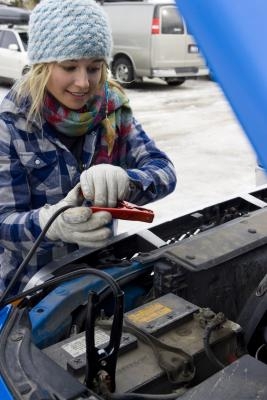
The Toyota 4Runner first debuted in 1984. Toyota combined the ruggedness and versatility of its four-wheel-drive pickup with the comfort of its passenger cars. The first design had two seats and a covered cargo area; the second was designed to carry up to five passengers with a rear seat that could be folded flat for cargo space. 4Runners are very versatile utility vehicles that are fun to own and drive. But you can't enjoy a 4Runner if it won't start. If your 4Runner won't start, you will have to check various components inside the vehicle and under the vehicle's hood.
Turn on the headlights and the key. If the headlights and dash indicator lights do not come on or aren't working, then your 4Runner's battery is dead and will require a jump start or battery replacement.
Attach a set of jumper cables to your vehicle and to a jump vehicle. Idle the jump vehicle to charge the dead battery. You can also use a portable battery box if a jump vehicle is not available.
Check your fuel level gauge on the instrument panel to make sure that your 4runner has enough fuel to start the engine. If your battery is not dead, the fuel level gauge will rise and display the amount of fuel in your tank.
Check to see if the connectors to the mass airflow sensor and the throttle body are plugged in if your vehicle is so equipped. If these connectors are loose, they will prevent your truck from starting.
Inspect the air filter and housing for any blockages that might keep the truck from getting air; without air, the truck will not start. Check that the air inlet hose for the throttle body is correctly connected and sealed.
Replace blown or damaged fuses or damaged wires around the fuse panel under the dash.
Remove the cap from the Schrader valve on the intake fuel rail and depress the valve, making sure the key is turned to "on." If no fuel comes out, you may have a bad fuel pump.